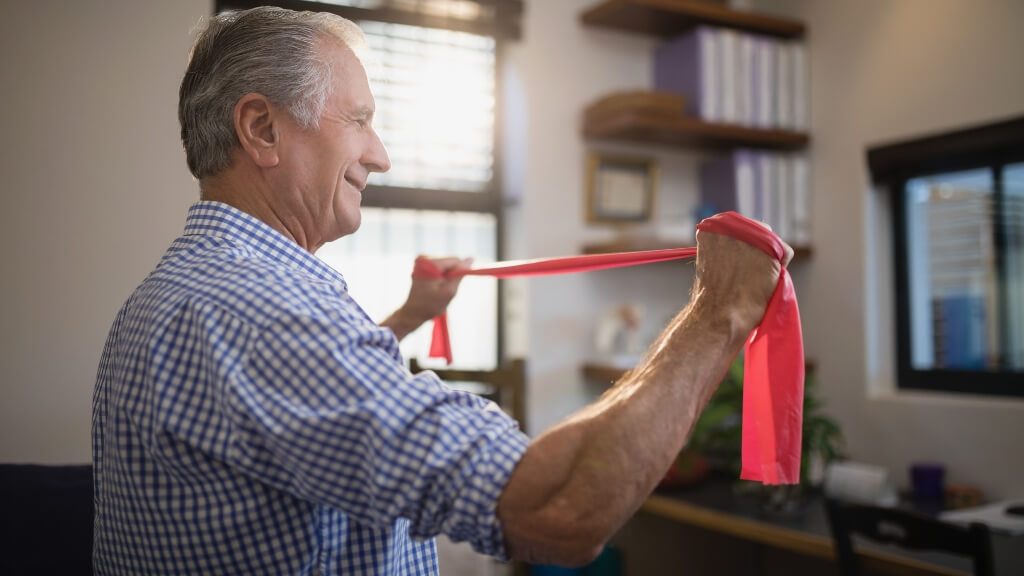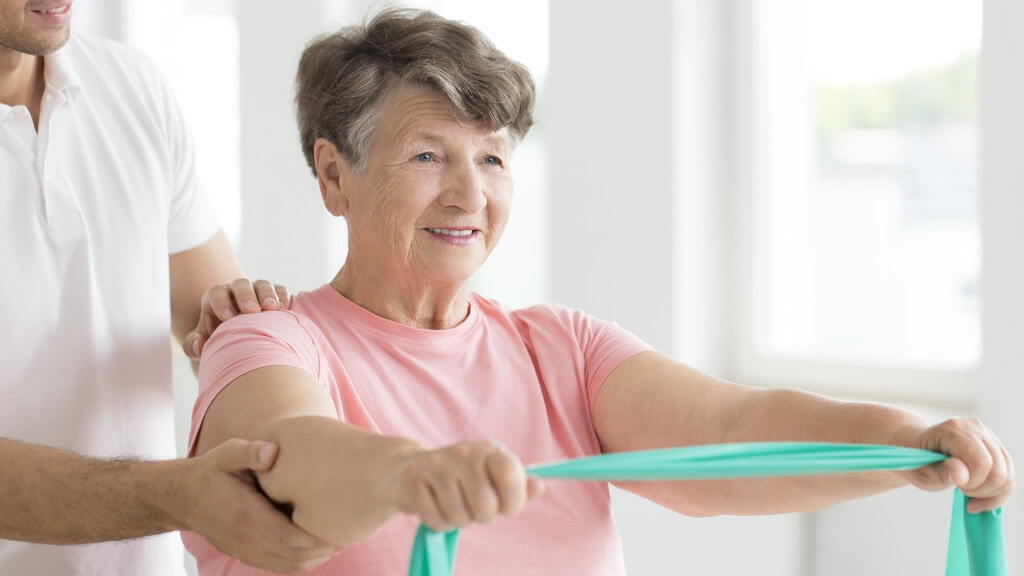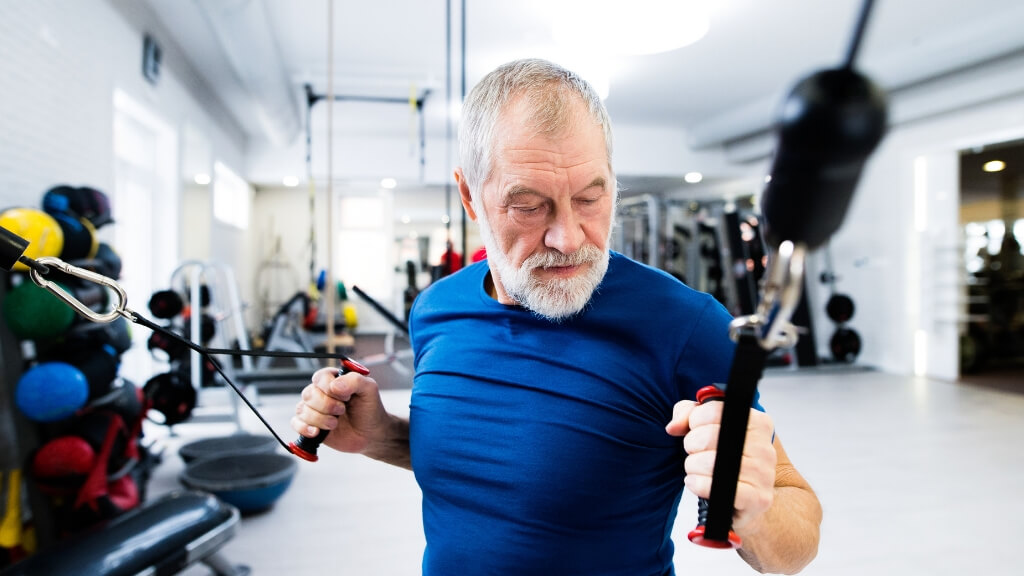Studies have found that light resistance training can keep you healthy and agile as you age. As we get older, it becomes important to keep moving, even when we feel like slowing down. Certain processes and body functions may slow as we age, but staying active can boost health and promote longevity.
The best part about resistance training is that you only need to do it once a week to enjoy the benefits.
Resistance Training for Healthier Aging
Health professionals strongly encourage those over the age of 65 to participate in resistance training programs. Working out just once or twice a week can dramatically improve your health. Blood pressure, cholesterol levels, and blood glucose levels, all of which are common problem areas in older adults, can begin to improve.
In addition to this, resistance training helps to reduce inflammation, which can increase your risk of heart disease, diabetes, and some forms of cancer.
Given that the immune system begins to slow as the body ages, anything you can do to reduce inflammation will help protect you from these all too common conditions. Dietary changes will only do so much, but regular exercise can make a big difference.

Resistance training also helps to improve your quality of life. As a result of fine-tuning the muscles with these workouts, you are better able to perform everyday activities and chores without pain. Lifting shopping bags, walking up and down stairs, and gardening are all less strenuous when your muscles are in good health and strength. Resistance training exercises are specifically designed for muscle health, making them the best option.
Studies have also found that regular resistance training benefits older adults' mood and psychological health. After about two weeks of these activities, mood and motivation to continue exercising improve. Regular exercise is known to increase the production of endorphins, and, as a result of continued resistance training, individuals report feeling healthier and happier.
Tips To Get the Most From Your Exercise
It is important to pay attention to your body when it comes to resistance training. You don’t want to strain your muscles, so it’s a good idea to start your routine slowly.
Don’t miss out on the benefits of improved muscle mass, reduced cognitive decline, and more energy because you pushed yourself too far. There are a few important things to remember when it comes to resistance training.
Be Kind to Your Joints
Resistance training has been shown to have powerful regenerative properties for joints, so long as you are careful. You need to prioritize a full range of motion when exercising, as this teaches your muscles to control your body during movement. As a result, joint health is improved, as is mobility and flexibility. It can even help add a joint health supplement to your diet for extra protection.

Perform Bodyweight Exercises
Weights may seem excessive, especially in the beginning, so using bodyweight exercises might be best. If you feel stronger down the road, you can progress to adding light weightlifting to the program.
The best bodyweight exercises to start with are lunges, squats, pushups, shoulder presses, step-ups, and bicycle crunches. Before moving on to weights, you should first try resistance bands to work your muscles a little harder. When combined with light cardio activities, like walking, swimming, or cycling, these exercises will make a noticeable difference in your health.
Add Balance Training
Along with improving muscle mass and strength, you also want to improve flexibility and balance. This is especially beneficial in older adults who are prone to falling. Exercising to improve balance at the same time as mobility and strength provides a comprehensive improvement to health and wellbeing.
The best balance moves to try are the flamingo stand, tightrope walk, sidestep, and grapevine walk. Trying beginner’s yoga is also a great way to incorporate balance training alongside strengthening your core. Tai chi is also a beneficial program to start for improving balance and flexibility, and it helps improve overall mental health.
Warmup and Recover
It’s important to plan enough time for recovering after your workout. Leave at least a day or two between training sessions to allow yourself time to recover and heal properly. If you are still sore after two days, leave yourself one more day.
As your body strengthens, you can return to a one- or two-day gap between sessions. When it comes to warming up, make sure you allow time for appropriate stretching before your workout so you don’t pull or damage any muscles.
Set Goals
Setting goals is important to keep you motivated, but make sure you’re realistic. You may want to be able to lift heavier weights, but you need to build up to this. Setting achievable goals allows you to accomplish them, and this goes a long way towards motivation and continued exercising.
Unattainable goals will frustrate you and cause you to give up before any health benefits can be achieved. If possible, arrange to exercise with a friend or family member. You can motivate and support each other while enjoying the benefits of good health together.
The Bottom Line
Don’t let aging slow you down. Not getting enough physical activity can increase your risk for disease, injury, and poor mental health. Your body may be limited in the exercises it can do, which is why light resistance training is an ideal solution.
With resistance training, you get just the right amount of movement designed to target specific areas of the body. You’ll be on your way to improving mobility, health, and psychological well-being with just a little training each week.







